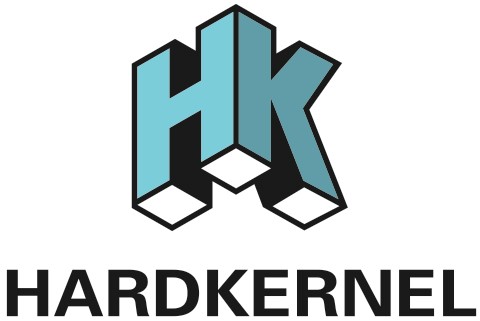
We have just moved to new place. It’s a two-story building. Our new address is below; [English] 475-1 Mananro, Manangu, Anyang, Gyeonggi, South Korea ZIP:430-852[Korean] 경기도 안양시 만안구 만안로 475-1 우:430-852 |

The first floor is duplex type warehouse. We need more time to organise it. |

The second floor is our main office. The developers are working here. |

A garden on the rooftop. We can have lunch here when the weather is good. |

Following the Korean traditional shamanism, we prepared some food and bowed preying for people’s safe and for being Hardkernel forever. |
Time to enjoy the great Volumio audiophile music player on the ODROID-C1.

Michelangelo Guarise (The creator of Volumio) has announced the Volumio OS image for the ODROID-C1 today.
We have a 1.5 Ghz quad Core CPU, which on paper is faster than many competitors (not only the PI). I’m not able to say how those figures are actually a sensible improvement, as I just started looking at the Amlogic SOC ( which seems quite ubiquitous in embedded multimedia appliances).
But what makes it really interesting for Volumio based scenarios are the Gigabit Ethernet, the eMMC memory slot (sold separately) and the integrated IR receiver. Add that Hardkernel seems to have the widest range of accessories for their boards, and you get that we can consider the C1 one of the best candidates to power a Volumio system.
Talking about real-world performances: the Odroid C1 delivers one of the smoothest Volumio experiences. It boots faster, and loads faster than the high-specs comparable quad-core boards (UDOO, Cubox-i).
More exciting news.
ODROID-C1+ is coming with a native I2S interface to support the HiFi DAC add-on boards. It will be available in the middle of August.
Volumio 2 is coming with four exciting key words Speed, Modularity, High Fidelity and Future Proof.
For those of you with an ODROID-C1, grab the image from the DOWNLOADS page as usual, and drop your feedbacks on this thread !
Setup
Setting up your C1 as a Volumio music player is dead easy, and the project’s website has documentation to guide you though the steps.
– Download Volumio image for C1 from http://volumio.org/get-started/
– Install the image on an SD card (2GB or larger). Installation guide is here.
– Connect the C1 and a USB-DAC to your amplifier and the network
– Boot the C1
– On any PC/Mac/Phone/Tablet, browse to http://volumio.local
– Configure NAS locations, Samba shares, etc,
– Add file to the playlist, sit back and listen !
First impressions
On the C1+, 192Khz/24bit FLAC/WAV files in a NAS server could play back flawlessly thanks to the 1.5Ghz quad-core processor and Gigabit Ethernet connectivity of ODROID-C1.
We could control the full features of Volumio with iPhone or Android smartphones. The Web UI does well on mobile.
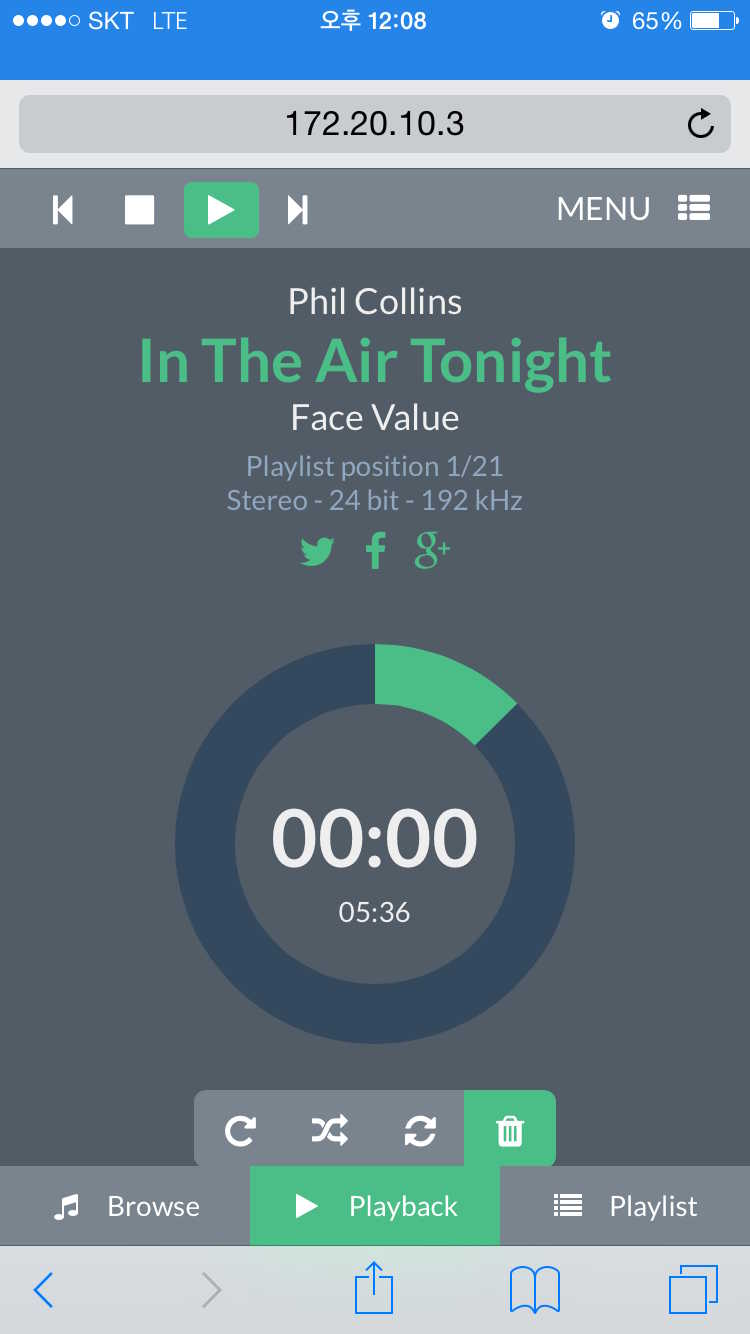
Do you want to control various GPIO/ADC/PWM/I2C/UART/1-Wire devices on Android?
Quick & Easy to make a nice GUI application with Java on Android ?
Can we call it “Embedded Android” ?
We’ve prepared 5 examples with some proper Kernel drivers for the ODROID-C1.
It is very basic and essential to learn the Embedded Android.
Note that you must update the Android OS image to enjoy below examples.
LED on GPIOs control with ADC input
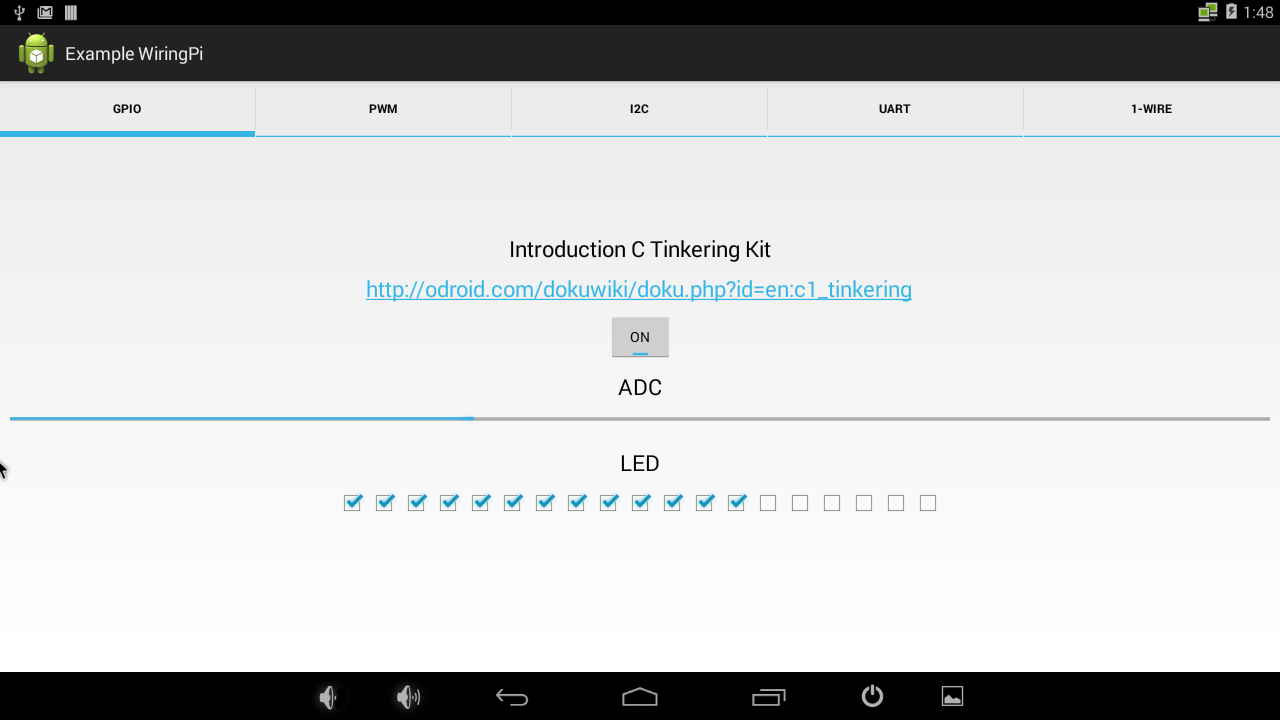
PWM Duty control GUI
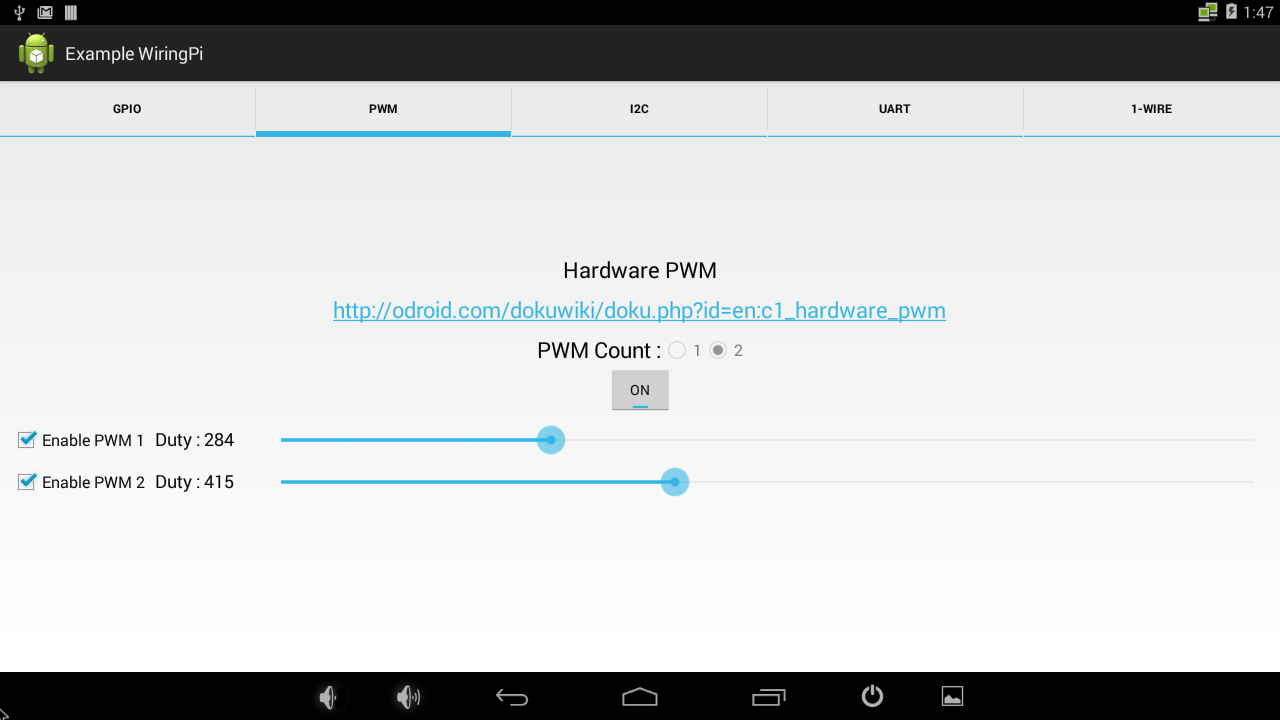
I2C sensor access and Display temperature, pressure, humidity, UV index, illumination and so on.
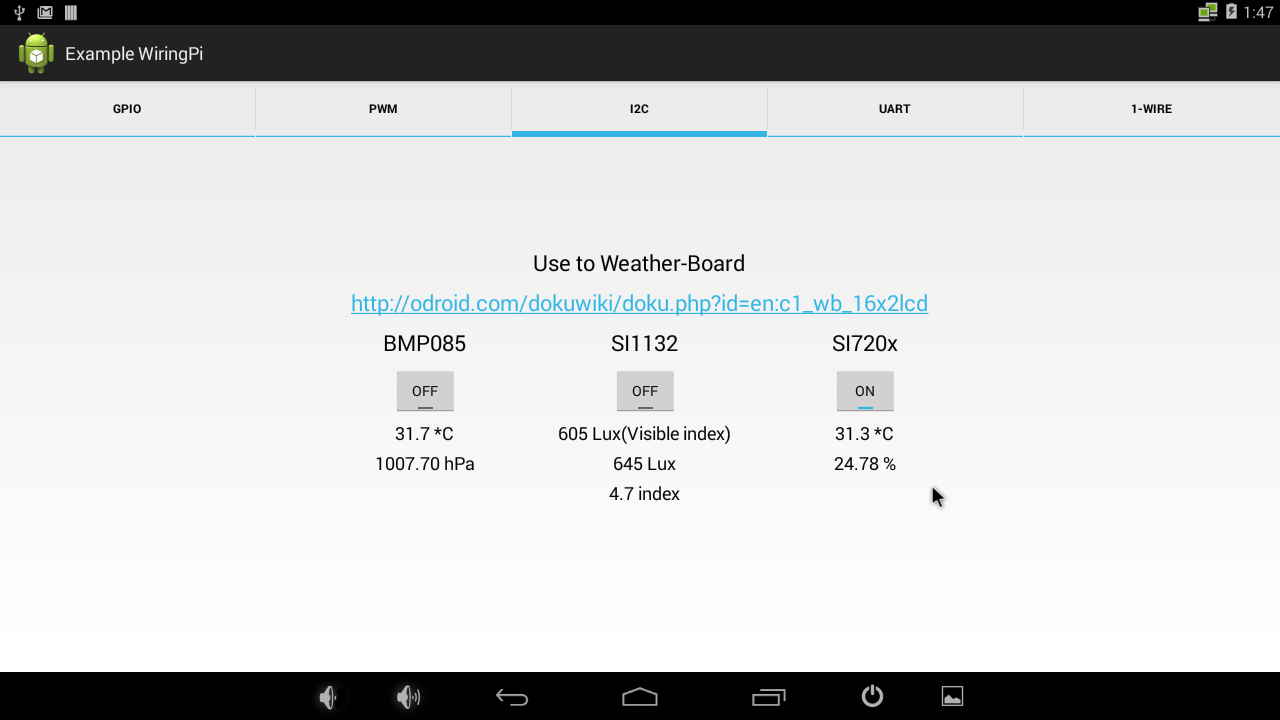
UART read/write access. You can test Tx and Rx signals.

1-wire access example can read the DS1820 sensor values from two nodes.
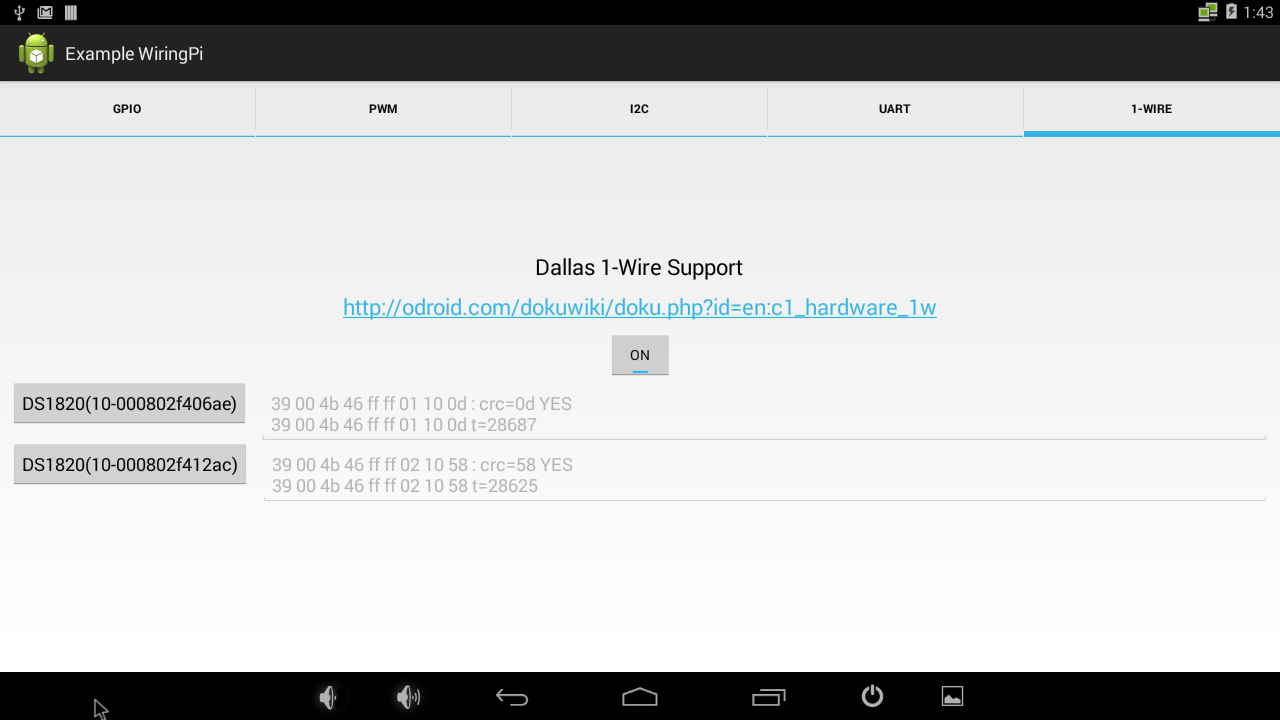
Source code and how-to guide are available now!
http://odroid.com/dokuwiki/doku.php?id=en:c1_enhancement_gpio40_on_android
Android OS image v1.5 for C1 is here.
http://odroid.com/dokuwiki/doku.php?id=en:c1_android_release_note_v1.5
|
||
| OpenGL ES and XBMC on Ubuntu |
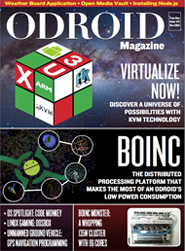
This month, we demonstrate how to enable virtualization on the XU3 with KVM, setup dual monitors with the XU3, install NativeBOINC, evaluate the DOSBox and Fake86 applications for DOS and X86 emulation, install Node.js and Open Media Vault, program a GPS navigation system for an unmanned ground vehicle, and much more!
– KVM Virtualization on the ODROID-XU3: A Brave New World of Computing
– Installing NativeBOINC: A Pictorial Guide
– Infographic: History of Ubuntu
– Building a BOINC Monster: 96 Cores for Only 135 Watts
– Microsoft-Free Mining with Freeminer: Now that Mojang has Set Sail for Redmond, How About An Open Source Game?
– Fake86: An Extremely Fast 8088/8086 Virtualizer
– Linux Gaming: DOSBox Emulator – Play Your Original DOS Games in HD
– Using Dual Monitors with an ODROID-XU3
– OS Spotlight: Code Monkey – Hardware and Software Developer’s All-In-One Operating System Image
– Easily Rotate Your Screen on Android: Defeat Your Virtual Enemies Without Rotating Your Entire Monitor
– Build An ODROID-Powered Off-Road Unmanned Ground Vehicle: Part 3 – GPS Navigation Programming
– Building a Weather Board Application: Create a Miniature Weather Data Collection System
– How to Install Node.js: A Modern Java-Based Web Application Platform
– Open Media Vault: Open Source Network Attached Storage for Debian GNU/Linux
– Meet an ODROIDian: Alexey Guseynov (@kibergus), Software Engineer Extraordinaire
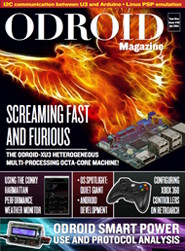
This month, we show off the new ODROID-XU3, walk through setting up your Xbox 360 controllers with RetroArch, compare the performance of the PPSSPP PlayStation Portable emulator between Linux and Android, get started with building a custom Android application, find out how to use I2C with an Arduino to connect with an ODROID-U3, and much more!
6 Inter-Integrated Circuit Communication (I2C): Establishing a Connection between U3 and Arduino
9 Android Development: Creating a Custom Android Application
14 8-Bit Computing Bonanza: Have Fun Playing Your Favorite MSX Games
15 Linux Gaming: PSP Emulation Comparison Between Linux and Android
20 OS Spotlight: Quiet Giant – A Lightweight LAMP, Samba and Minecraft Server
22 ODROID-XU3: The Fastest Computer Made by Hardkernel So Far!
24 RetroArch: Configuring Xbox 360 Controllers with RetroArch v1.0.0.2+
25 Smartpower: Use and Protocol Analysis
32 All About Debian: An Epic Infographic
33 Tune Your Linux Desktop to Monitor Performance and Weather: Using Conky and Harmattan 3
7 Hardkernel at ARM TechCon 2014: Showing Off the XU3
38 Meet an ODROIDian: Bruno Doiche, Art Editor of ODROID Magazine

Please visit our booth and talk together.
Expo Hours : The ARM TechCon Expo floor is open on Wednesday, October 1, from 11:00 am to 6:00 pm, and on Thursday, october 2, from 10:30 am to 5:30pm.
Location : Santa Clara Convention Center
Booth number : #216
Conference discount code : IfINUc69
You can see and feel this demo on our booth !

2 x 1080p monitors are connected to XU3 via HDMI and DisplayPort cables. Yes, we call it “dual-head”.
A few OpenGL ES 3.0 and OpenCL demos run in parallel on Ubuntu X11 desktop.
It also shows a running Android OS on a Cortex-A15 core by KVM. Nice virtualization example!
See you soon!!
Thanks for the long waiting. We have released Android KitKat 4.4 for ODROIDs.
ODROID-U3/U2 : http://com.odroid.com/sigong/nf_file_board/nfile_board_view.php?keyword=&tag=&bid=214
– Kernel 3.0.51
– Mali400 GPU Driver version r3p1-01rel1 is merged
– Android RenderScript API support (high-performance computation across heterogeneous processors)
– 2D acceleration Driver for the Google Maps compatibility
– WiFi RTL8188CUS & RTL8191SU chipset support
– Ethernet LAN9730 chipset support
– USB GPS support
– USB HID Touchscreen support
– ODROID Utility to set the CPU governor and HDMI resolution
– Mouse “right-click to ESC” and “wheel to zoom” mapping
– USB Webcam(UVC) support
ODROID-XU series : http://com.odroid.com/sigong/nf_file_board/nfile_board_view.php?keyword=&tag=&bid=213
– Kernel 3.4.5
– OpenGL ES 1.1/2.0 (GPU acceleration)
– OpenCL 1.1 EP (GPU acceleration)
– Android RenderScript API support (high-performance computation across heterogeneous processors)
– 2D acceleration bug is fixed. Google Maps is working now.
– Mouse “right-click to ESC” and “wheel to zoom” mapping
– On board Ethernet and external USB 3.0 Gigabit Ethernet support
– RTL8188CUS and RTL8191SU Wireless USB dongle support
ODROID-X/X2 : Please wait one more week. We will update the link next week.
If you have any question, ODROID community is always open. http://forum.odroid.com/
|

